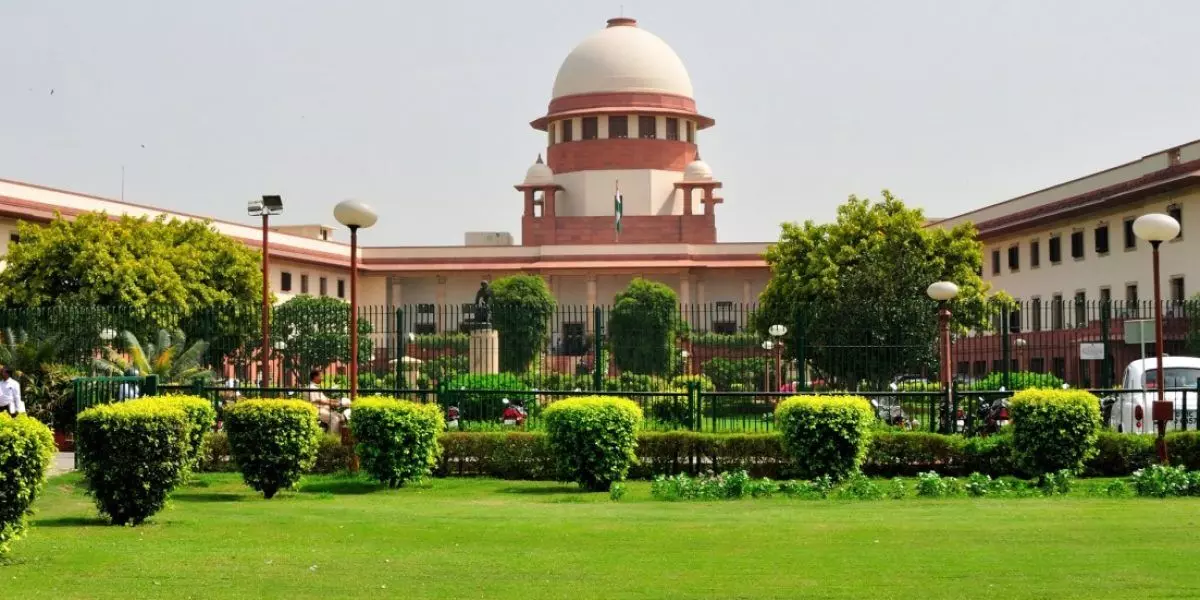Opinion: Does judiciary go by facts or perception?
Anyone even remotely suggesting that the judiciary decides cases by anything other than facts will most likely be held guilty of contempt. Of course, unless the one so suggesting is himself/herself part of the judiciary.
By Ashish Naredi
Hyderabad: Anyone even remotely suggesting that the judiciary decides cases by anything other than facts will most likely be held guilty of contempt. Of course, unless the one so suggesting is himself/herself part of the judiciary.
Shockingly, such a sacrilegious remark was made by none other than a judge of the Supreme Court of India in a case related to the ban on fireworks. When advocate J. Sai Deepak, representing an individual firework retailer, brought to the notice of the court that IIT Kanpur, in an extensive study done on the causes of air pollution in Delhi, had not even listed fireworks as a cause of air pollution, the Hon'ble Justice is reported to have remarked, "Do we need IIT to understand the impact of firecrackers on your lungs? This is common knowledge!"
Thus, the judge, in this instance, seems to have emphatically rooted for "common knowledge" over scientific data as a basis of reaching a judgment even when the scientific data is at complete variance with common knowledge, as propounded by the judge.
This without a doubt sets a very grave and dangerous precedent of giving credence to a judge's perception over science and is at complete variance with all principles of justice. Yet, surprisingly, the apex court not only seems to have done this but also seems to have gotten away with it, at least in the case related to the banning of fireworks.
One of the reasons for this is judicial overreach whereby the courts not just adjudicate but also pass executive orders in complete violation of the doctrine of "separation of powers". The order of the ban on fireworks was not issued by any government or executive authority, as is to be done, but by the court itself. And then the court itself decided if the orders issued by its own self were right or wrong!
The situation can be best described by one of the famous Urdu couplets of Sudershan Faakir:
मेरा क़ातिल ही मेरा मुन्सिफ है (Mera qatil hi mera munsif hai)
क्या मेरे हक़ में फै िला देगा ? (Kya mere haq mein faisala dega)
Faakir laments the fact that his murderer is the one sitting in judgment of his case and questions if he can expect justice from such a court.
While it is indeed surprising that the highest court of the land committed this grave error, what is even more shocking is the fact that it is aided in this exercise both by the government whose powers are usurped and the media whose duty it is to keep a watch on such violations.
Contrary to popular perception, the Central government led by the BJP (Bharatiya Janta Party), far from protesting this ban, actually supported the ban vide an affidavit filed by the ministry of environment, forests, and climate change in the Supreme Court. And the media instead of studying the subject in depth and bringing out the facts to the fore has itself chosen to the path of pinning, most if not all, the ills of the air pollution on the fireworks. Result is the victory of perception over science and of opinion over facts.
Readers may find it surprising but science and research are categorical in their findings that fireworks are not the cause for air pollution in either Delhi or any other place in India. The author has written a detailed paper on the subject which can be downloaded here. Let it be recorded that it is not just one research conducted by one institute (IIT Kanpur) that has absolved fireworks of any role in air pollution. Five different institutes in five different studies have reached the same conclusion. See the graphic below:
Above graphic is an extract from a report of CEEW (Council for Environment, Energy and Water) Delhi. As can be seen from the graphic, the contribution of fireworks to air pollution has been found to be negligible to zero by everyone (TERI, SAFAR, Guttikonda, and IIT Kanpur) who has studied the subject scientifically.
Interestingly, even the NGT (National Green Tribunal) itself did not list fireworks as a cause of pollution in Delhi. Yet, it passed an order banning fireworks citing COVID as the reason. See the table below for the causes listed by NGT.
There is a lot more data and analysis on the subject which can be found in the paper written by the author. However, the critical question that needs to be asked, for now, is how and why did fireworks get banned in spite of such a strong case against the ban?
One of the answers, in the studied opinion of the author, is the victory of perception over facts. And this should be a sign of worry for all. Even if one is not much concerned with the ban on fireworks, one should definitely be concerned with the defeat of evidence backed by science at the hands of manufactured public opinion. Today it is fireworks and a Rs. 3,000 crore industry which ended up on the wrong end of the stick. Who knows what could face a similar end tomorrow?
Thus, in the interest of truth and science, the author would like to request all to not just read but also share this write up widely.